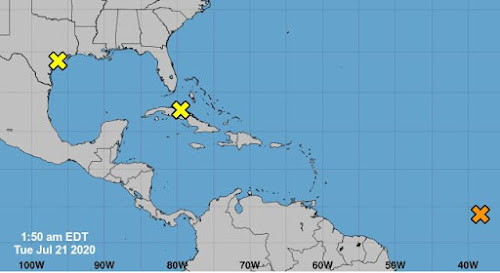Written by the TreasureGuide for the exclusive use of treasurebeachesreport.blogspot.com.
Treasure Coast Sunrise
Photo by TreasureGuide
Above is what I think is one of my prettiest sunrise photos. The color wasn't edited at all. That is the way it looked.
---
The Treasure Coast salvage crews continue to make finds. Several four and eight reales were found at the Cabin Wreck site. Also a small ornate piece of gold that looks like a bead end.
Down at Corrigans, fragments of what appear to be a low carat gold ring were found. Looks very like it might have a lot of copper content.
I saw a ring fragment found on Corrigans beach back in February, or thereabouts, but it looked like a much higher carat gold.
---
Here is a small bit of an article about Krokmyrdal, a detectorist turned archaeologist, who described how it happened.
It’s been his hobby for several years to search for metals, alongside his full-time employment working with logistics at the postal company Post Nord.
He explains that it all started with a book many archaeologists are familiar with, Olav Rygh’s analysis of Norwegian farm names.
Sandtorg literally means «market or trading place at Sand». No archaeological evidence could actually prove this to be right, but it made Krokmyrdal curious.
At first, he did not find anything at Sandtorg, but it turned out that he was searching too low, and that the areas he was examining had been underwater during the Viking Age.
Once he moved higher in the terrain, the discoveries started rolling in.
“That’s when I signed up for the master programme in archaeology”, Krokmyrdal says...
Here is a small bit of an article about Krokmyrdal, a detectorist turned archaeologist, who described how it happened.
It’s been his hobby for several years to search for metals, alongside his full-time employment working with logistics at the postal company Post Nord.
He explains that it all started with a book many archaeologists are familiar with, Olav Rygh’s analysis of Norwegian farm names.
Sandtorg literally means «market or trading place at Sand». No archaeological evidence could actually prove this to be right, but it made Krokmyrdal curious.
At first, he did not find anything at Sandtorg, but it turned out that he was searching too low, and that the areas he was examining had been underwater during the Viking Age.
Once he moved higher in the terrain, the discoveries started rolling in.
“That’s when I signed up for the master programme in archaeology”, Krokmyrdal says...
Here is the link for more of that story.
---
Here is another fossil I saw on the beach Saturday.
 |
| Treasure Coast Fossil |
Unlike the nice sharp small tooth I showed yesterday, this tooth appears to have been well used and worn.
I usually call these horse teeth, but it would probably be more accurately be called an equus tooth. Here is what Wikipedia says.
Equus is a genus of mammals in the family, Equidae which includes horses, donkeys, and zebras. Within Equidae. Equus is the only recognized extant genus, comprising seven living species. Like Equidae more broadly, Equus has numerous extinct species known only from fossils. The genus most likely originated in North America and spread quickly to the Old World. Equines are odd-toed ungulates with slender legs, long heads, relatively long necks, manes (erect in most subspecies), and long tails. All species are herbivorous, and mostly grazers, with simpler digestive systems than ruminants but able to subsist on lower-quality vegetation.
So there are seven living species that include donkeys and zebras as well as horses, but there are also numerous extinct species. Some people can identify them very easily, but I'm far from being able to do that.
---
 |
| Three Areas to Watch. Source: nhc.noaa.gov |
In the mean time we have one system over Cuba that looks like it will move into the Gulf. And the system in the South Atlantic has a better chance of forming in the next couple of days, but is still far away.
No big change in local beach conditions.
Happy hunting,
TreasureGuide@comcast.net
